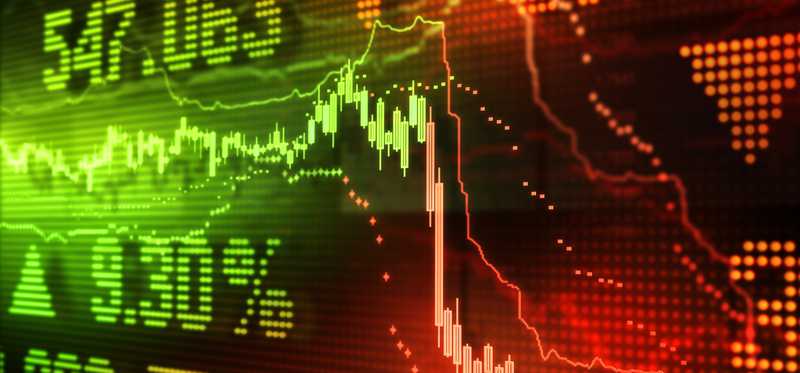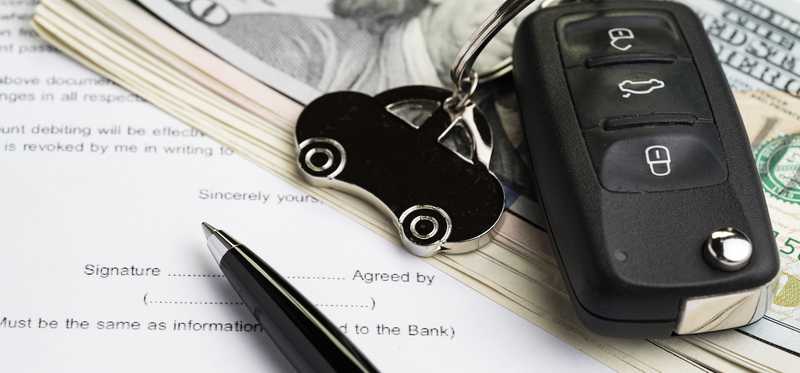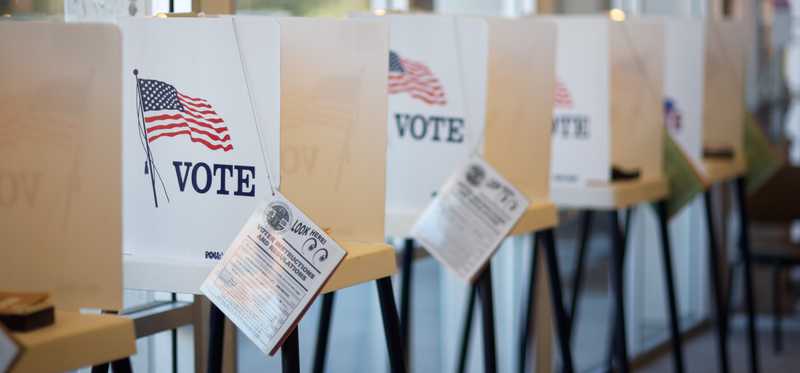10 Events That Could Cause the Next Stock Market Crash

Source: Getty Images
Continue
Reading
1 of
Stock market corrections are more common than you probably realize
Currently, the U.S. stock market is in the midst of one of the longest bull markets in its history. Since bottoming out in March 2009, the broad-based S&P 500 (INDEX: ^GSPC), led by a strong rally in technology stocks and other growth industries, has surged by more than 325%! Mind you, the stock market has historically returned 7% a year, inclusive of dividend reinvestment and adjusted for inflation. So, to say that things are going well right now would be an understatement.
But the fact of the matter is that this bull market won’t last forever. Stock market corrections are a healthy and normal part of the investing process. Data from market analytics firm Yardeni Research shows that there have been 36 corrections in the S&P 500 of at least 10% since 1950. That equates to about one every two years.
Just as interesting is the fact that 22 of these 36 corrections took place in 104 or fewer days. Or, in other words, when the stock market heads lower, it tends to do so with a swiftness that we usually don’t see when it’s moving to the upside.
Eventually, we'll see another stock market crash. The only question left to be answered is what will cause it.
Here are 10 events that may wind up being the next crash culprit.
Previous
Next

Source: Getty Images
Continue
Reading
2 of
1. The Fed gets too aggressive
The nation’s central bank, the Federal Reserve, has a job that most investors take for granted. Its Board has to take into account backward-looking economic data and forward-looking projections, and use monetary tools at its disposal to keep the economy from overheating or underwhelming. It’s a tightrope act that most folks would want no part of.
Unfortunately, the Fed is fallible, just like stock market investors. If inflation -- i.e., the rising price of goods and services -- begins to heat up, the nation’s central bank could choose to get considerably more hawkish with its monetary policy. Or, in plainer English, it could get more aggressive with hiking its benchmark short-term interest rate between banks. Should that happen, interest rates for variable rate loans and mortgages would be expected to rise. This, in turn, could put the brakes on economic growth, as well as increase delinquency rates tied to variable rate loans.
The Fed has been blamed for pumping the brakes on economic growth and the stock market before, and it’s possible an overly aggressive Fed could do so again.
ALSO READ: Will Inflation Cause the Next Stock Market Crash?
Previous
Next

Source: Getty Images
Continue
Reading
3 of
2. Disruption in the oil market
When you think of oil production, the Middle East or OPEC is probably what comes to mind. But substantial shale finds in the United States in recent decades have pushed the nation the No. 3 spot in terms of daily production as of 2016, according to data from the U.S. Energy Information Administration. At 8.88 million barrels of oil production per day, the U.S. is responsible for more than 10% of global production.
If oversupply weighs on the market and pushes crude prices down, it has the potential to wreak havoc on the U.S. energy sector, spurring job cuts and potentially even pushing the U.S. into a deflationary cycle, which is what happened in 2015.
Conversely, if production issues strike a major producer (imagine, for example, a civil war in Libya), then skyrocketing oil prices could also have a detrimental impact. Rising crude prices could lead to significantly higher inflation levels and sap consumers of discretionary income at the pump or in their homes via fuel oil. We saw something similar to this in 2008, when West Texas Intermediate made a run at $150 per barrel following escalating tensions between Iran and the United States.
Long story short, if there’s any sort of disruption in the oil market, the stock market may react very poorly.
Previous
Next

Source: Getty Images
Continue
Reading
4 of
3. A subprime auto loan crisis
Sure, it’s been about a decade since the height of the financial crisis, but it doesn’t mean that lenders have necessarily abandoned some of the practices that got them into trouble in the first place.
As a case in point, I present to you subprime auto loans, or loans given to consumers with less-than-prime credit scores (usually 550 to 619 on the FICO score scale). Having a lower credit score typically gives these folks fewer lending options, which allows lenders that are willing to work with subprime consumers to charge a notably higher interest rate, relative to prime-rated consumers. The problem is these consumers usually have subpar credit scores for a reason, and delinquency rates on these subprime and deep subprime loans are shooting higher.
According to data from Equifax in August 2017, deep subprime auto loans -- i.e., loans with an origination VantageScore of 530 or less, on a scale of 300 to 850 -- have hit delinquency rates that hadn’t been seen since 2007. Interestingly enough, when examining the auto market as a whole, no red flags arise in terms of delinquency rates. But if you focus solely on subprime and deep subprime loans, they’ve been deteriorating of late.
Could this be a ticking time bomb? Maybe.
ALSO READ: Warren Buffett's Advice for a Stock Market Crash
Previous
Next

Source: Getty Images
Continue
Reading
5 of
4. The 2018 U.S. elections
As much as we might want to distance ourselves from politics, it does play a role in the stock market.
Right now, Republicans have control of the legislative branch of the U.S. government, albeit by a slim margin in the Senate. Having a majority of seats in both houses of Congress, and a Republican President in Donald Trump, increases the probability of legislation being passed. Not to mention, the GOP is often viewed as a party that’s friendlier to businesses. This Republican majority is responsible for passing the Tax Cuts and Jobs Act in December 2017, which slashed the peak marginal corporate income tax rate to 21% from 35%.
However, there may be a shake-up coming by November. If Democrats win a majority of seats in the Senate and/or House, it would substantially reduce the likelihood of any major legislation being signed into law. That could be viewed as a big negative by Wall Street, and could lead to a notable decline in stocks.
Previous
Next

Source: Getty Images
Continue
Reading
6 of
5. A global trade war erupts
Perhaps the likeliest reason for the next stock market crash could be an escalating trade spat between the United States and China. After the U.S. initially placed tariffs on $34 billion worth of Chinese goods, China retaliated with tariffs of its own on an equal value of imported U.S. goods. Now the two sides are threatening to one-up the other with tariffs.
Though the Trump administration has looked to tariffs to help balance out a huge trade deficit with China, these added costs on aluminum, steel, and potentially other Chinese goods, could come back to haunt businesses and U.S. consumers. As material costs rise as a result of tariffs, businesses have little choice but to pass along these higher costs to consumers. That will likely result in less consumption, and an eventual pullback in spending from businesses, which may lead to a borderline recession.
The problem is, President Trump has pointed his finger at Canada and the European Union on trade as well. By pushing tariffs as a means to rectify trade imbalances, the Trump administration runs the risk of launching a global trade war. And if worries about a trade war mount, a stock market meltdown might ensue.
Previous
Next

Source: Facebook
Continue
Reading
7 of
6. The stock market gets “de-FAANG-ed”
Another way the stock market could be crippled is if it were somehow “de-FAANG-ed.” This abbreviation stands for Facebook (Nasdaq: FB), Apple (Nasdaq: APPL), Amazon (Nasdaq: AMZN), Netflix (Nasdaq: NFLX), and Google, which is now a subsidiary of Alphabet (Nasdaq: GOOG)(Nasdaq: GOOGL).
These five tech and consumer service giants have accounted for a significant portion of the S&P 500’s and Invesco QQQ Trust’s gains in recent years. Further, data from Bloomberg finds that the original FANG stocks (minus Apple) are slated to grow sales at an average rate of 36% in the second quarter, which is four times faster than the average S&P 500 company. However, the FAANG stocks aren’t impervious to a change of heart.
On July 25, shares of social media giant Facebook cratered around 20% after the company missed revenue and active-user forecasts. Even with robust year-over-year sales growth, Facebook’s handling of numerous scandals and misinformation clearly hasn’t set well with investors.
Likewise, Netflix tanked roughly 14% after the company reported adding 5.2 million streaming subscribers, which was approximately 1 million fewer than had been forecast. With Netflix throwing everything at its international expansion, its lofty valuation might be catching up.
In short, if the tide turns on the FAANG stocks, the stock market could pay the price.
ALSO READ: Be Wary of FAANG Stocks
Previous
Next

Source: Getty Images
Continue
Reading
8 of
7. Another computer-based flash crash
A computer glitch, or perhaps even a fat-finger trade, could be responsible for the next stock market crash.
According to estimates from JPMorgan Chase in June 2017, just 10% of all stock-trading volume is the result of investors picking stocks to buy and sell. The remainder of trading volume primarily derives from quantitative-based computer trading. Essentially, we’re talking about computer programs that aim to secure small profits via high-frequency trading (HFT) hundreds or thousands of times a day.
Usually, HFT programs and computer trading works without a hitch. But once in a while problems do crop up. Back on Aug. 24, 2015, the United States’ three major stock indexes plunged on the open, but would recover much of their losses by midday. Among the reasons blamed for the dip were market makers and HFT traders. With so many stocks within the S&P 500 failing to open on time, and a number of exchange-traded funds under trading halts, HFTs and other high-speed traders shut down their systems, removing much-needed liquidity from the marketplace and exacerbating the early-day decline.
Though flash crashes are few and far between, quant-based programs and HFTs are certainly capable of precipitating a crash.
Previous
Next

Source: Official White House photo by Shealah Craighead
Continue
Reading
9 of
8. Trump tweets (seriously!)
Never has social media played as key a role for a sitting U.S. President as it has for Donald Trump. Aside from regularly providing his opinion on domestic and global issues, Trump has, on occasion, riled the stock market with his 280-character-or-less opinion-based tweets.
Back in late March and early April, Amazon’s stock sank after a barrage of tweets from President Trump alleged that Amazon was costing the U.S. Post Office money. Trump also took exception to the unfair playing field Amazon has created in comparison to brick-and-mortar retailers.
A little more than a week later, stocks sank after a tweet from the president challenged the idea that Russia’s missile defense system could shoot down American smart bombs. Investors clearly worry that Trump’s tweeted rhetoric could be taken the wrong way by one or more global leaders, leading to escalation, or even conflict. Should that happen, the stock market could tank.
Previous
Next

Source: Getty Images
Continue
Reading
10 of
9. Poor U.S. GDP data
Let’s not overlook the obvious: if quarterly U.S. GDP data doesn’t impress Wall Street, the Trump-driven rally since he took office in January 2017 could come crashing down.
During the second quarter, U.S. GDP hit a growth rate of 4.1%, which is the highest level since 2014. Significantly lower corporate income tax rates following the passage of the Tax Cuts and Jobs Act, along with lower individual income tax rates, which may be improving tax-home pay, look to be at least partially responsible for this strong growth.
But if U.S. GDP growth were to falter -- let’s say dip to 1% or lower on an annual basis -- then it would be really difficult to support existing valuations for companies in the technology and biotech arenas. And since tech and biotech have played such a critical role over the past nine-plus years in pushing stocks higher, they could easily be responsible for dragging the stock market into a correction.
Previous
Next

Source: Getty Images
Continue
Reading
11 of
10. European crisis, round two
Though we’re more than a half-decade removed from the European sovereign debt crisis, the issue has in no way been put completely to bed. Greece, Italy, Spain, and a number of European countries are still deep in debt, and while their banks are on respectively better footing, they’re far from being anywhere near solid financial ground.
Making matters worse, as noted by CNN in June, politics threaten to disrupt the harmony that was sought when the European Union was created. Substantial political differences exist with Poland’s and Hungary’s leaders relative to the rest of the EU at the moment.
Also, Britain is in the midst of exiting the EU (“Brexit” is what this exit is more commonly known as), and its departure may entice other EU countries to leave as well. That has the potential to destabilize the euro and everything the EU has built over the past 25 years.
Though it’s tough to say exactly which country could prove to be the tipping point, a second European crisis could be on its way.
ALSO READ: How to Handle the Next Market Crash
Previous
Next

Source: Getty Images
Continue
Reading
12 of
The only two things we know for certain about stock market crashes
Ultimately, there are only two truths when it comes to stock market crashes.
The first, as was alluded to earlier, is that they’re inevitable. No matter what the Fed does in terms of monetary policy, the economy naturally goes through boom and bust cycles. This means stock market corrections and crashes are inevitable, too.
The only other certainty is that it’s impossible to know with any concreteness what event will cause the next crash. I could list 100 events that could be the downfall of the stock market, and yet none of those may come to fruition. It could wind up being some factor completely out of left field that pushes stocks lower.
But despite not knowing when corrections will occur, how long they’ll last, or what’ll be their root cause, it still pays to buy high-quality stocks and hang onto them for long periods of time. After all, the stock market has averaged a return of 7% annually on a historic basis, and that type of return is tough to beat.
John Mackey, CEO of Whole Foods Market, an Amazon subsidiary, is a member of The Motley Fool’s board of directors. Suzanne Frey, an executive at Alphabet, is a member of The Motley Fool’s board of directors. Sean Williams has no position in any of the stocks mentioned. The Motley Fool owns shares of and recommends Alphabet (A shares), Alphabet (C shares), Amazon, Apple, Facebook, and Netflix. The Motley Fool has the following options: long January 2020 $150 calls on Apple and short January 2020 $155 calls on Apple. The Motley Fool has a disclosure policy.
Previous
Next

